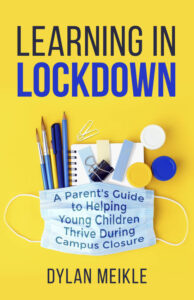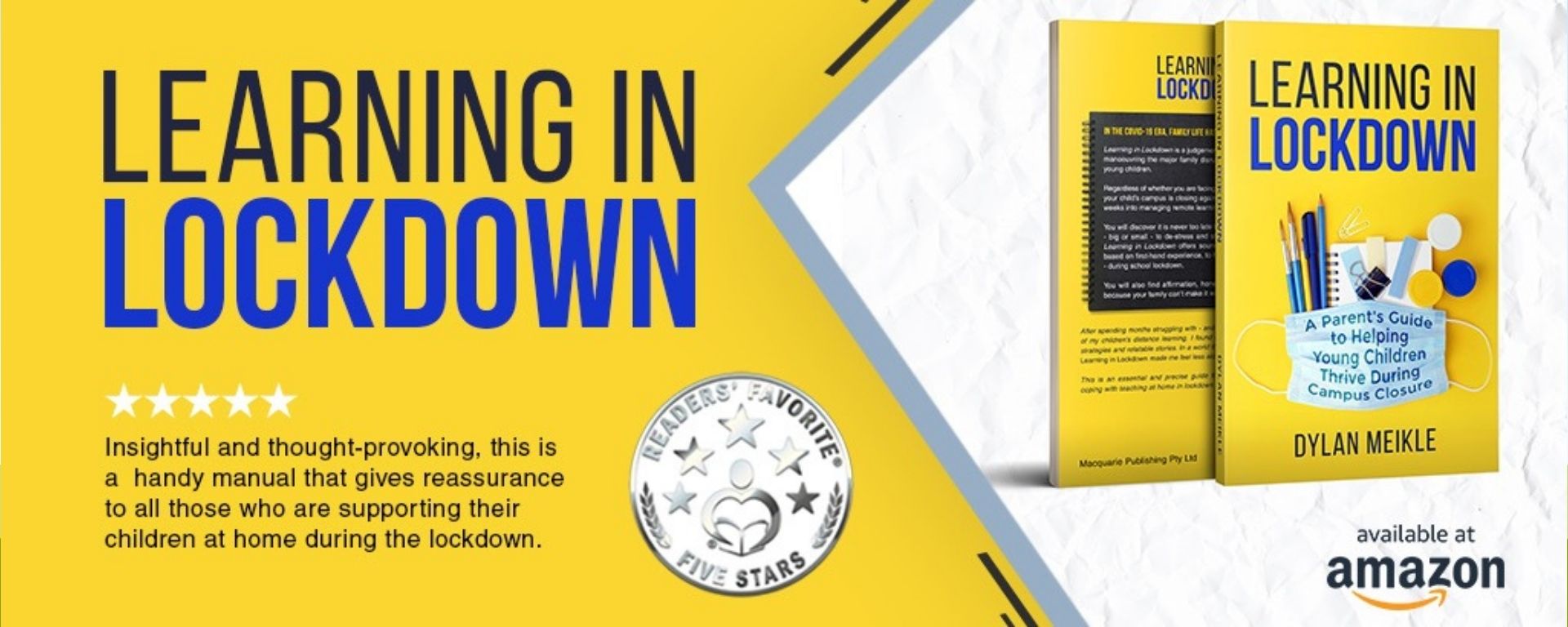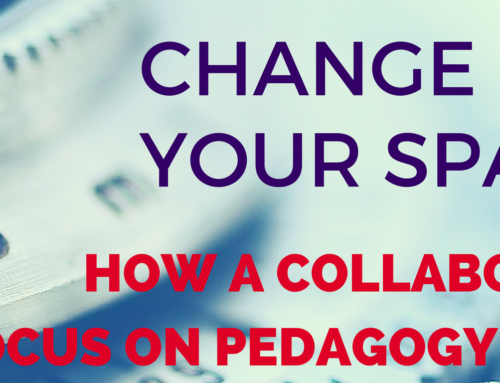
Learning in Lockdown: A Parent’s Guide to Helping Young Children Thrive During Campus Closure
In December 2020 we were pleased to publish Learning in Lockdown, a guide and handbook for parents of young children coping with the challenges of teaching their children at home during Covid-19 lockdown restrictions.
The timely book was well-received globally, with paper and ebook distribution and sales across the English-speaking world.
The following excerpt from the book delves into learning spaces at home:
MAKE SPACE FOR LEARNING
There are environmental cues that help students recognise that it’s time to work. By now, you may have already figured out that (ideally) you should create a special place for your child to do their distance learning. This provides students with some cognitive clarity around the idea that ‘when my body is in this space, I’m here to work’.
If you haven’t yet set up a designated space for your child to do their desk work—give it a try. And if you have set one up, now might be the time to change it up. Variety, after all, is the spice of life, and this rings true for both the classroom and home learning environment.
Teachers frequently move their desks and tables around their classrooms to spark student interest and refresh their spaces. They also use the strategy of ‘regrouping’ (where children will work in different groups, in different parts of the classroom) throughout the year. Depending on your home setup, you might be able to move your child’s learning space, or bring them into closer proximity with siblings or parents also working from home.
You should get your child enthused too: ask them where they would like to set up their ‘new’ learning space. Have your child take some pride in the space by adding motivating (but not too distracting) items to their work area, like cool pens and erasers. By now, there are lots of images online of people sharing their home school work spaces, but remember, it’s not a competition! You know your child best and you know their levels of distractibility and their need for movement and physical and visual stimulation.
Maintain realistic expectation about the length of time your child needs to be seated and focused. Reflect on yourself as an adult and how you are empowered to ‘self regulate’ when working by getting up to make a hot drink, use the bathroom, or make a phone call whenever you need to. As adults we often take a minute to distract ourselves (check a text message, think about what’s for dinner…) and then we jump back into a work task feeling renewed. Don’t expect a child to magically have a longer attention span than you do.
Create a space that sends visual cues that ‘I’m here to work, not play’, and include school-style elements, like the week’s schedule and their class photo, posted up clearly. One clever parent told me they write down the day’s learning activities on Post-It Notes, and arrange them on the wall nearest their child’s desk. As the child completes each task, they physically move the Post-It from the wall onto a poster that the parent and child decorated, labelled ‘I’ve done it!’ in eye-catching colours and script.






